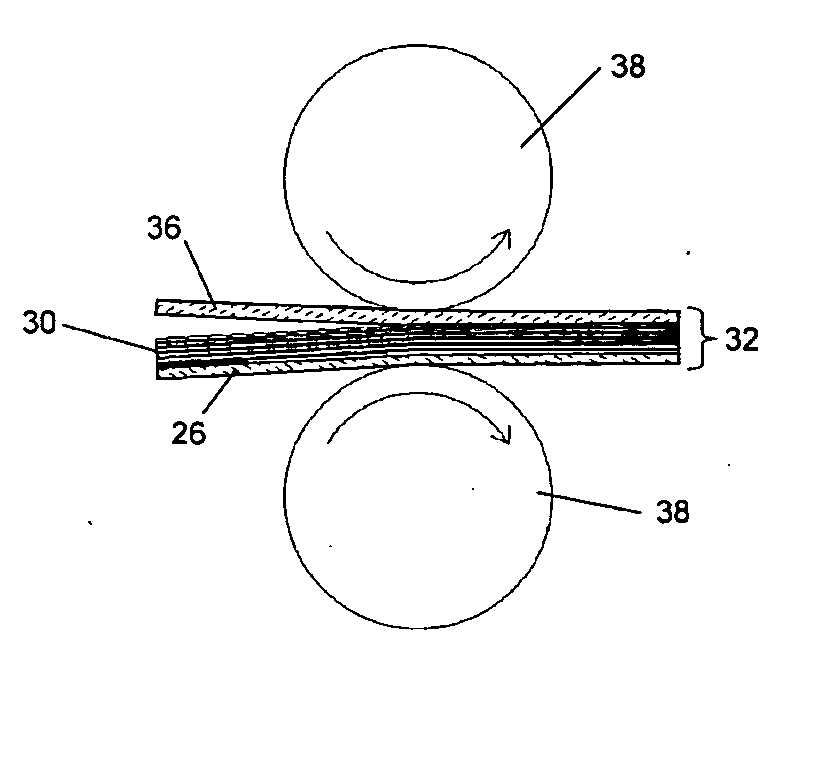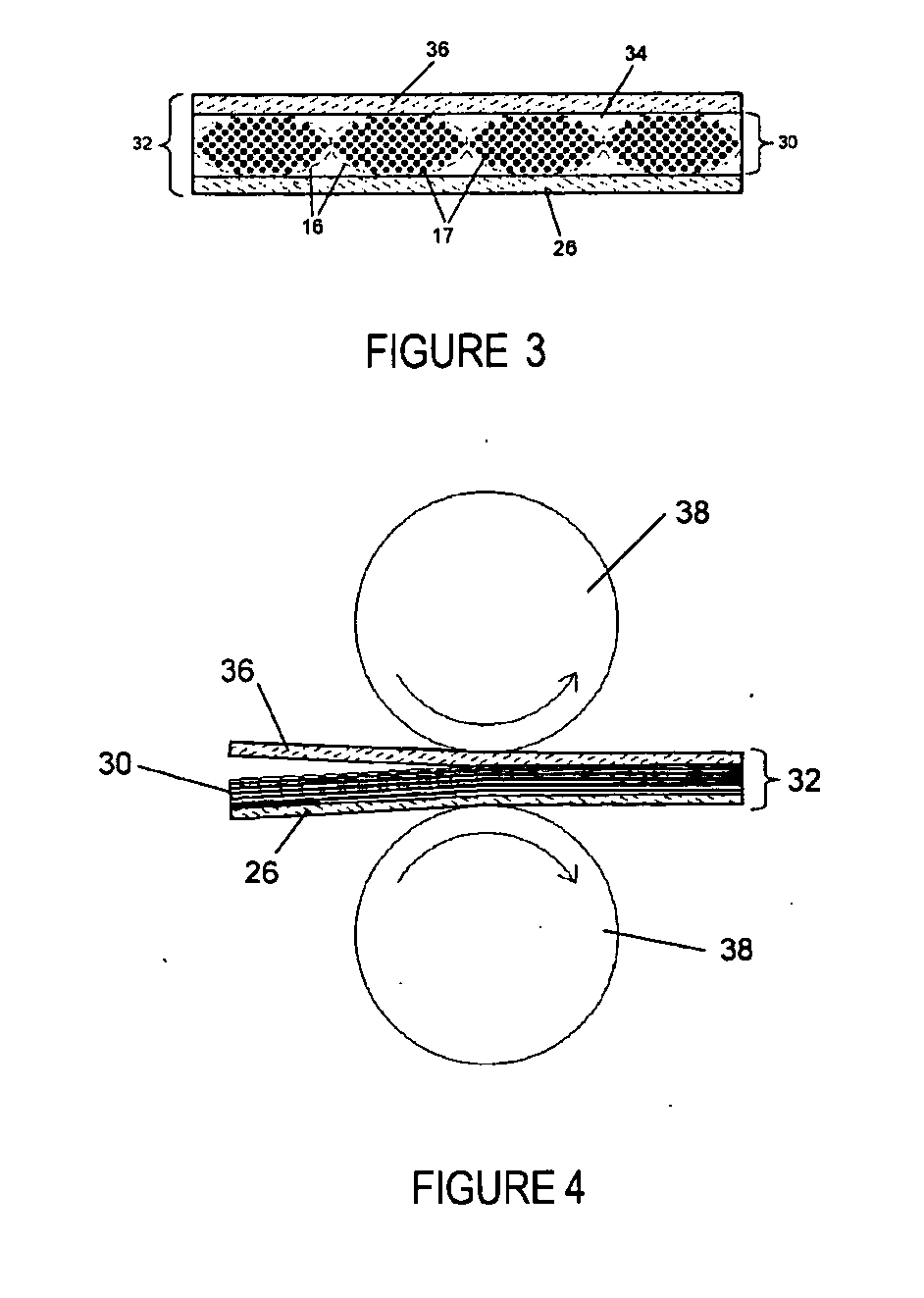Process of producing ceramic matrix composites
a ceramic matrix and composite technology, applied in the field of ceramic matrix composite (cmc) articles, can solve the problems of affecting so as to improve the quality of ceramic matrix composites, and promote the effect of physical and mechanical properties
- Summary
- Abstract
- Description
- Claims
- Application Information
AI Technical Summary
Benefits of technology
Problems solved by technology
Method used
Image
Examples
Embodiment Construction
[0023] The present invention is generally applicable to CMC components, and particularly CFCC components. Notable examples of such components include combustor components, high pressure turbine vanes, and other hot section airfoils and components of gas turbine engines, though the invention has application to other components, including advanced power generation steam turbines and various other equipment that can make use of CMC components. Examples of CMC materials to which the invention pertains include those with a silicon carbide, silicon nitride and / or silicon reinforcement material in a ceramic matrix of silicon carbide, silicon nitride and / or silicon, e.g., a SiC / SiC CMC, though the invention also applies to other types of CMC materials. Examples of such materials and components are disclosed in commonly-assigned U.S. Pat. Nos. 6,024,898, 6,258,737, and 6,503,441, the contents of which relating to CMC materials and processing steps are incorporated herein by reference.
[0024]...
PUM
| Property | Measurement | Unit |
|---|---|---|
| thickness | aaaaa | aaaaa |
| thickness | aaaaa | aaaaa |
| thickness | aaaaa | aaaaa |
Abstract
Description
Claims
Application Information
 Login to View More
Login to View More - R&D
- Intellectual Property
- Life Sciences
- Materials
- Tech Scout
- Unparalleled Data Quality
- Higher Quality Content
- 60% Fewer Hallucinations
Browse by: Latest US Patents, China's latest patents, Technical Efficacy Thesaurus, Application Domain, Technology Topic, Popular Technical Reports.
© 2025 PatSnap. All rights reserved.Legal|Privacy policy|Modern Slavery Act Transparency Statement|Sitemap|About US| Contact US: help@patsnap.com



